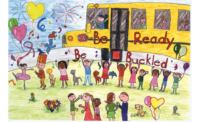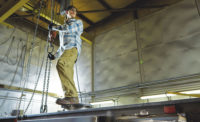The growing popularity of e-cigarettes has been accompanied by a sharp increase in nicotine poisonings among U.S. children, according to a new study conducted by the Center for Injury Research and Policy of the Research Institute and the Central Ohio Poison Center, both at Nationwide Children’s Hospital.
Researchers found e-cigarette, nicotine and tobacco product exposures among children younger than six years old rose by 1,500 percent from January 2012 through April 2015, based on more than 29,000 calls related to e-cigarettes made to Poison Control Centers in the U.S.
Variety of tobacco products
The study found that cigarettes accounted for about 60 percent of exposures, followed by other tobacco products (16 percent) and e-cigarettes (14 percent). Children under two years old accounted for nearly all cigarette and other tobacco exposures (92 percent and 75 percent, respectively), and almost half of e-cigarette exposures (44 percent).
On average, every 3 hours a poison center receives a call about a young child exposed to an e-cigarette or liquid nicotine. That’s more than 7 children each day. Children exposed to liquid nicotine were more than five times more likely to be admitted to the hospital and two-and-one-half times more likely to have a severe medical outcome than children exposed to traditional cigarettes.
The one child death in this study was associated with exposure to liquid nicotine accessed from an open refill container.
Senior study author Gary Smith, MD, DrPH called it “an epidemic by any definition.” Smith, who is Center director, added; “This is another example of a highly toxic product being introduced to the market without regard to child safety.”
A regulatory approach
A recently passed federal law will become effective in July of this year that requires child-resistant closures for liquid nicotine containers, which Smith called, “a good first step.”
Experts are also calling for prohibitions on the use of flavors (as was done for cigarettes since 2009), restrictions on packaging and labeling that makes nicotine products attractive to children, ensuring that liquid nicotine compartments on e-cigarettes are child-resistant, and limiting the concentration and/or quantity of nicotine in refill products.
Keeping your children safe
Study co-author and director of the Central Ohio Poison Center Henry Spiller, MS, D.ABAT urged parents of young children to treat liquid nicotine like any other poison in the home.
“If you vape, store vaping supplies – especially refill containers – up, away, and out of sight, preferably in a locked location,” said Spiller. Don’t leave them lying around on the coffee table, in the cup holder in your car, or in your purse. Kids are curious and can get into trouble quickly with liquid nicotine.”
Parents and child caregivers can help children stay safer by following these tips:
- Store e-cigarettes and refill products where children cannot see or reach them – in a locked location is best. Do not store them in a purse, which children can easily access.
- Use and refill alone. Do not use e-cigarettes around children. Because children want to imitate adults, using e-cigarettes and refilling them with children nearby could lead to a dangerous exposure. The images, smells, and colors may attract children.
- Refill, clean, and dispose of products safely. Wear rubber or latex gloves when handling liquid nicotine. Clean up spills right away with paper towels. Get rid of leftover liquid by pouring it into a bag of kitty litter or coffee grounds. Put empty liquid nicotine containers, papers towels, and any other waste into the bag, and throw it away in a trash can kids can’t open. Once everything is in the trash, wash your hands.
- Adults in households with children younger than 6 years old should be counseled on vaping cessation. If adults with young children continue to use e-cigarettes, they are strongly encouraged not to use or store e-cigarettes, liquid nicotine, and related products in the home.
- Save the national Poison Help Line number (1-800-222-1222) in your cell phone and post it near your home phones.
The Central Ohio Poison Center provides state-of-the-art poison prevention, assessment and treatment to residents in 64 of Ohio’s 88 counties. The center services are available to the public, medical professionals, industry, and human service agencies. The Poison Center handles more than 42,000 poison exposure calls annually, and confidential, free emergency poisoning treatment advice is available 24/7. To learn more about the Poison Center, visit www.bepoisonsmart.org.
The Center for Injury Research and Policy (CIRP) of The Research Institute at Nationwide Children’s Hospitalworks globally to reduce injury-related pediatric death and disabilities. With innovative research at its core, CIRP works to continually improve the scientific understanding of the epidemiology, biomechanics, prevention, acute treatment and rehabilitation of injuries. CIRP serves as a pioneer by translating cutting edge injury research into education, policy, and advances in clinical care. For related injury prevention materials or to learn more about CIRP, visit www.injurycenter.org.



